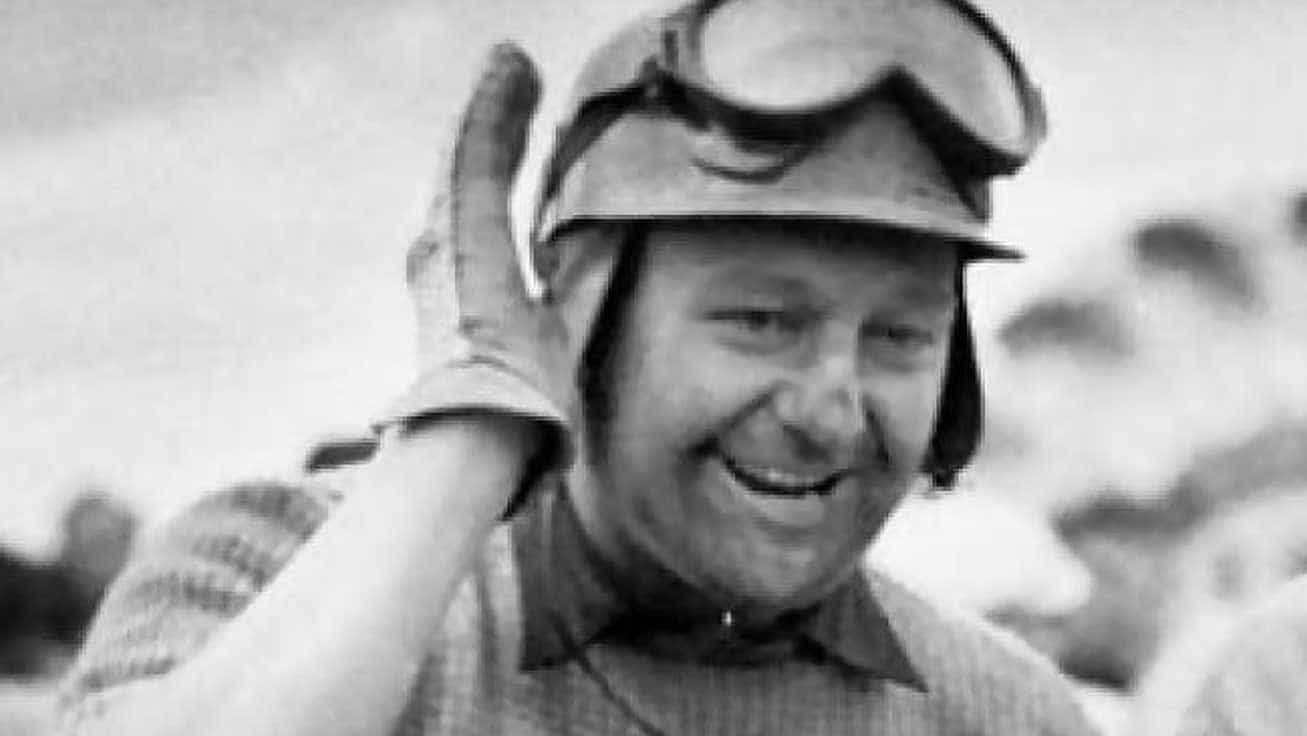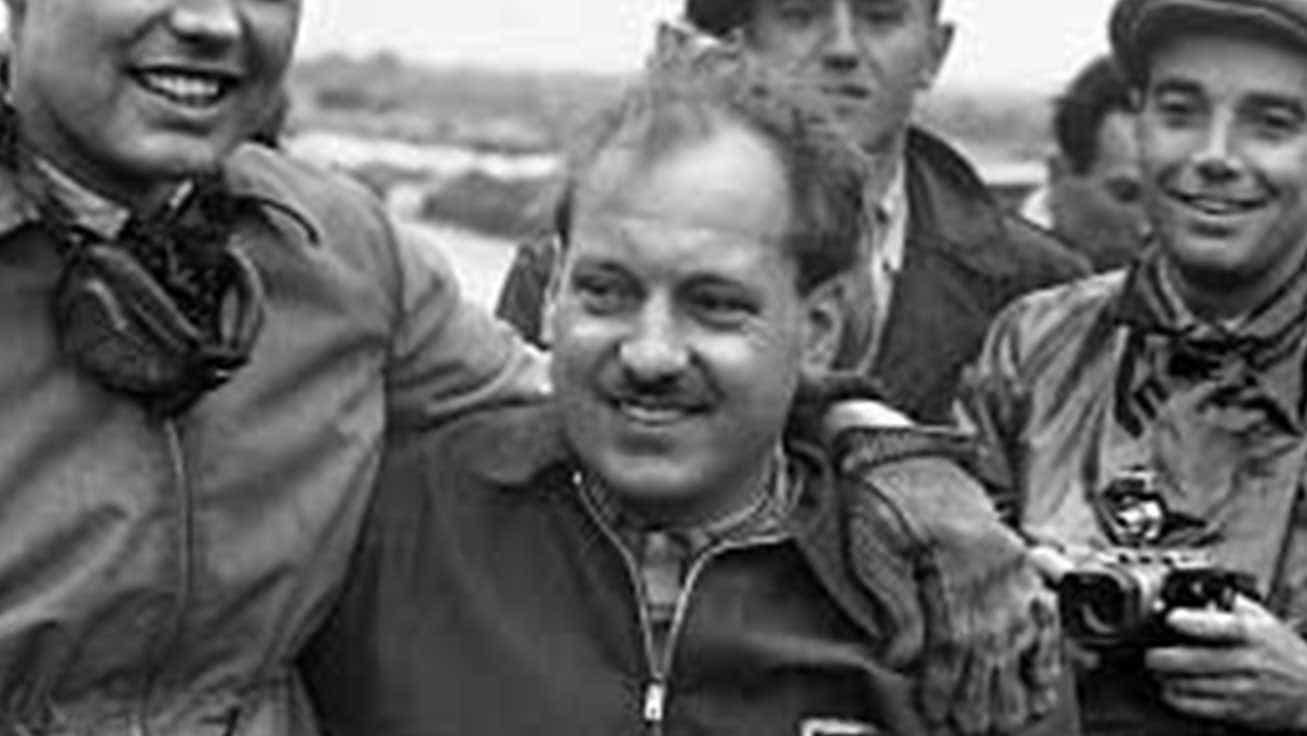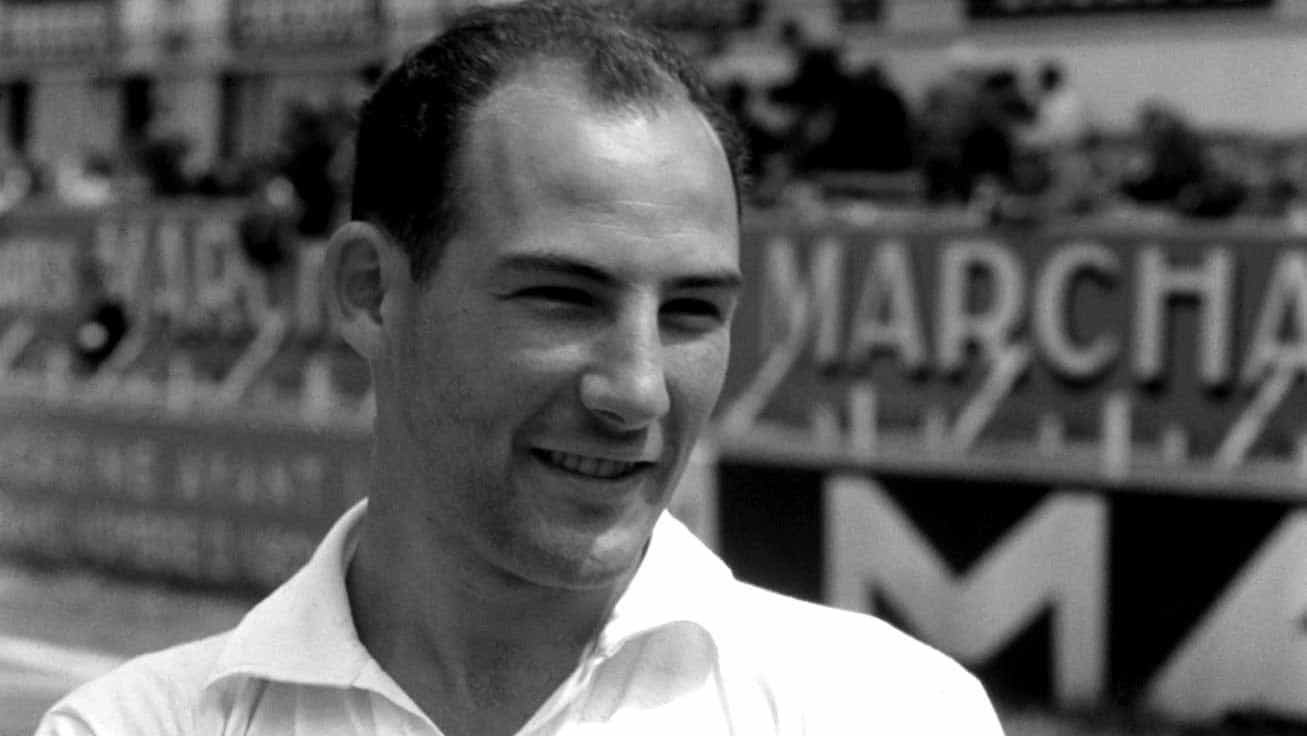How the Jaguar D-Type's wartime roots led to Le Mans dominance
The Jaguar D-type's design was inspired by aircraft engineering, with a semi-monocoque structure for weight reduction and drag reduction. It won Le Mans three times.
Getty Images
Car to remember
Jaguar D-type
You can see it in the drawings: slice a D-type in half either way and you’ll get an ellipse. During WWII Jaguar built bomber wings, and it’s hard not to connect those streamlined, skinned-alloy structures with Malcolm Sayer’s sleek D-type. If you’re determined to retain your grip on Le Mans and you don’t have the resources for a new engine, you have only two avenues: cut weight and slash drag. Aiming for both, Sayer’s incremental ‘test, refine, test again’ methods steadily homed in on the taut curves we know as the greatest Fifties Le Mans car – a device that would bring another three wins to Browns Lane.
When Sayer and engineering wizard Bill Heynes discussed options in late ’53 – for a 1954 entry! – they chose a folded, riveted and welded centre section. It’s a semi-monocoque: a front ‘subframe’ carrying engine and wishbones runs back inside the tub for confidence. But the rear suspension (trailing arms and torsion bars like the C) hangs directly on the rear bulkhead while body, tank and spare wheel are cantilevered from it, too. Result – rigidity, small cross-section (vital for drag) and a smooth underbelly.
“It’s a toolroom car,” says David Morris, restorer and racer whose family for many years owned OKV3, one of the 1954 Le Mans team cars. “It’s superbly put together and with a good driver it’s virtually unbreakable. To me the original 3.4 is the sweeter engine but of course the 3.8 has the sheer power.”
Dry-sumping the engine kept the front view compact and the cooling opening small, helping the D to an impressive 170mph. Using his aircraft experience Sayer added a head fairing and that famous tailfin, so drivers found the D stable as well as fast, though buffeting on the ’54 cars led to the wraparound screen. David Morris’s father Martin set a record with OKV3: “He was officially timed at Le Mans at 187mph, and as far as I know that’s the highest for a D. And he said the fin really did work. Even at those speeds the car ran straight. It’s comfortable, too, which matters over 24 hours.”
And while 1954 brought a near miss at Le Mans, Hamilton and Rolt finishing less than a lap behind Ferrari’s winner, and 1955 proved a hollow victory after the awful accident, there was no doubt about the next two, which fell to Ecurie Ecosse. Having withdrawn from racing at the end of ’56, Jaguar still garnered benefits from cars sold to privateers. Sophisticated in conception, the D was simple to run and a delight to drive, and if not for new capacity limits kyboshing its competitiveness it might have pushed its Le Mans score up even higher. As if that voluptuous form needed mere results to glorify it.
Stars of the decade
Tony Rolt
He was never far from the front during the early 1950s, winning Le Mans in 1953. Rolt retired from racing two years later to go and work on developing four-wheel-drive technology.
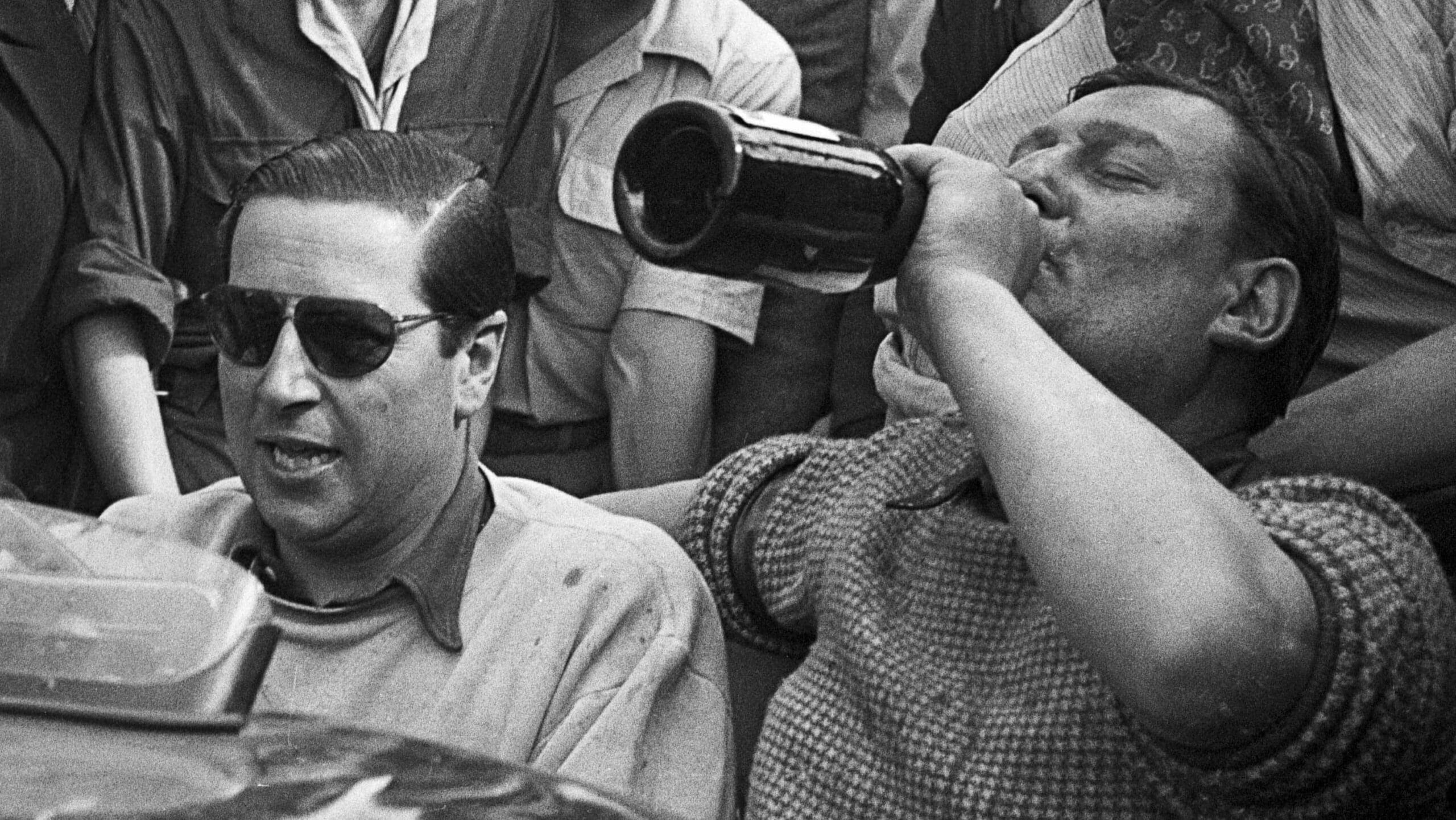
Tony Rolt ‘left’ with Duncan Hamilton
Getty Images
Duncan Hamilton
Larger-than-life Hamilton was a familiar figure in the ’50s with Jaguar’s works team. He shared Rolt’s win in 1953 and came close the year after too, but mechanical trouble plagued him at Le Mans.
Ivor Bueb
Twice a winner in Jaguar D-types, with Mike Hawthorn in 1955 and Ron Flockhart in ’57. His very first stint in the car came right after the pitstop confusion that triggered the 1955 tragedy.
Stirling Moss
‘The Boy’ never won the race, but was leading with Fangio when Mercedes pulled out in ’55. His speed meant he was always the hare: he recorded two second places and a clutch of DNFs.
Winners
1950
Talbot-Lago T26 GS
Louis Rosier/Jean-Louis Rosier
3465km
Rosier Sr allows son Jean-Louis to drive for only two laps…
1951
Jaguar XK120C
Peter Walker/Peter Whitehead
3611km
Le Mans debuts for Stirling Moss and Porsche
1952
Mercedes-Benz 300SL (W194)
Hermann Lang/Fritz Riess
3734km
Pierre Levegh (Talbot-Lago) drives solo for almost 23hrs. He’s leading by four laps when a missed downshift triggers a race-ending crankshaft failure
1953
Jaguar C-type
Tony Rolt/Duncan Hamilton
4088km
Jaguar wins using disc brakes
1954
Ferrari 375 Plus
José Froilán González/Maurice Trintignant
4061km
1955
Jaguar D-type
Mike Hawthorn/Ivor Bueb
4135km
Forever scarred by the accident that kills Mercedes driver Pierre Levegh and more than 80 spectators. Mercedes totally withdraws from racing at the end of the season
1956
Jaguar D-type
Ninian Sanderson/Ron Flockhart
4035km
Pit straight widened following the previous year’s disaster
1957
Jaguar D-type
Ron Flockhart/Ivor Bueb
4397km
Jaguar takes 1-2-3-4
1958
Ferrari 250 TR58
Olivier Gendebien/Phil Hill
4102km
1959
Aston Martin DBR1/300
Roy Salvadori/Carroll Shelby
4348km
Gallery
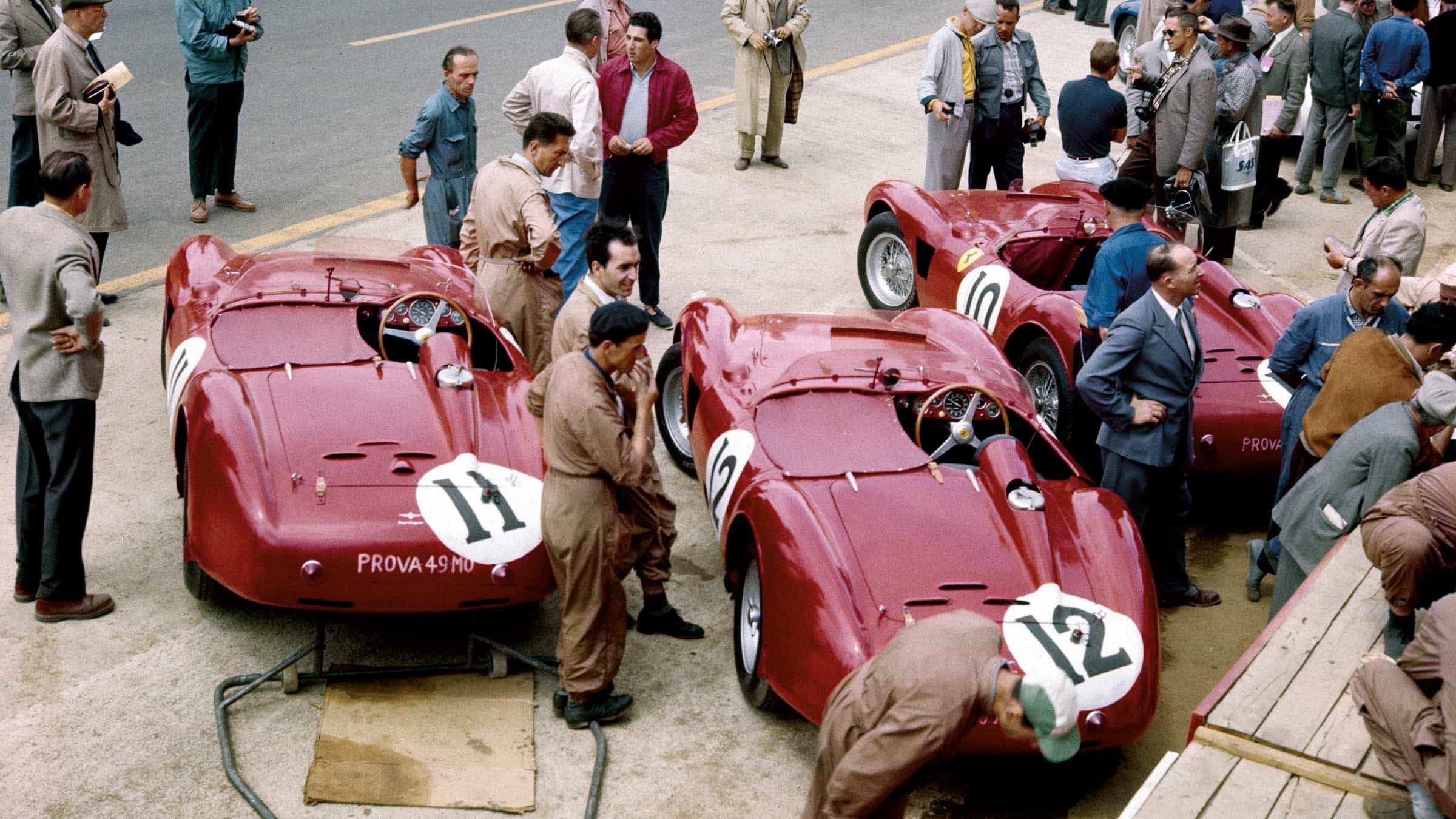
The Ferrari team lined up in the pits ahead of the 1956 race. The trio of 2.5-litre 625LMs would have an eventful race, with the #12 of Olivier Gendebien and Maurice Trintignant being the sole finisher in third
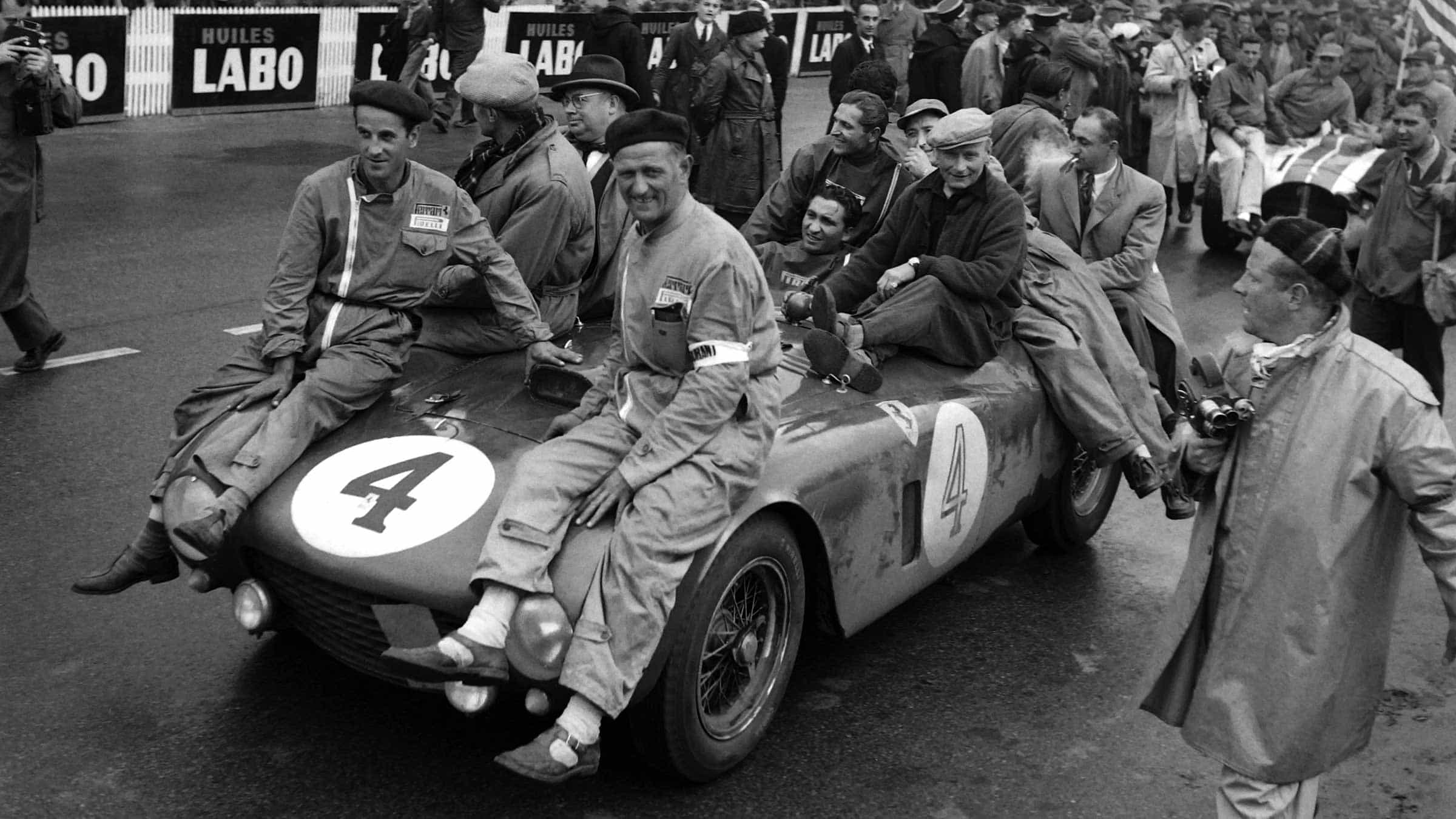
Ferrari’s mechanics escort the winning 375 Plus of José Froilán González and Maurice Trintignant down the pits. This would be Ferrari’s second outright Le Mans win. It would go on to notch a total of nine victories between 1949-1965
Getty Images

Le Mans’ post-war years brought a fresh influx of American cars and drivers. One of the more distinctive being ‘Le Monstre’, a Cadillac Spider raced by Phil Walters and Briggs Cunningham in 1950
Getty Images

Duncan Hamilton and Tony Rolt ride aboard their Jaguar C-type after victory in 1953, the first for the Jaguar works team after the success of the privateer XK120C in 1951
Getty Images
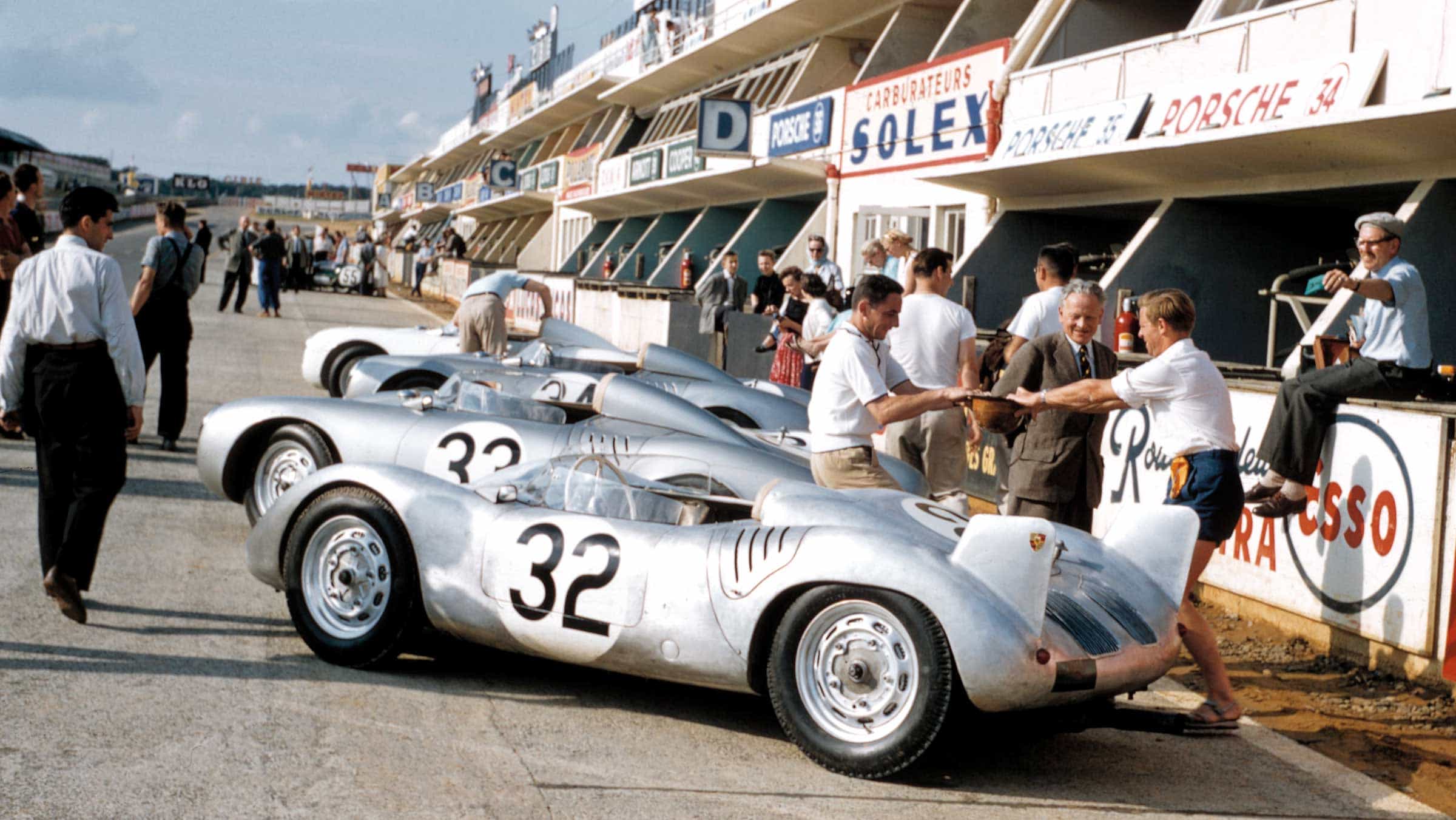
The Porsche team 550A Spyders before practice in 1957. On the right participating in an impromptu tug of war is Paul Frère, the Belgian driver-journalist, who would finish fourth with a Jaguar D-type
Getty Images
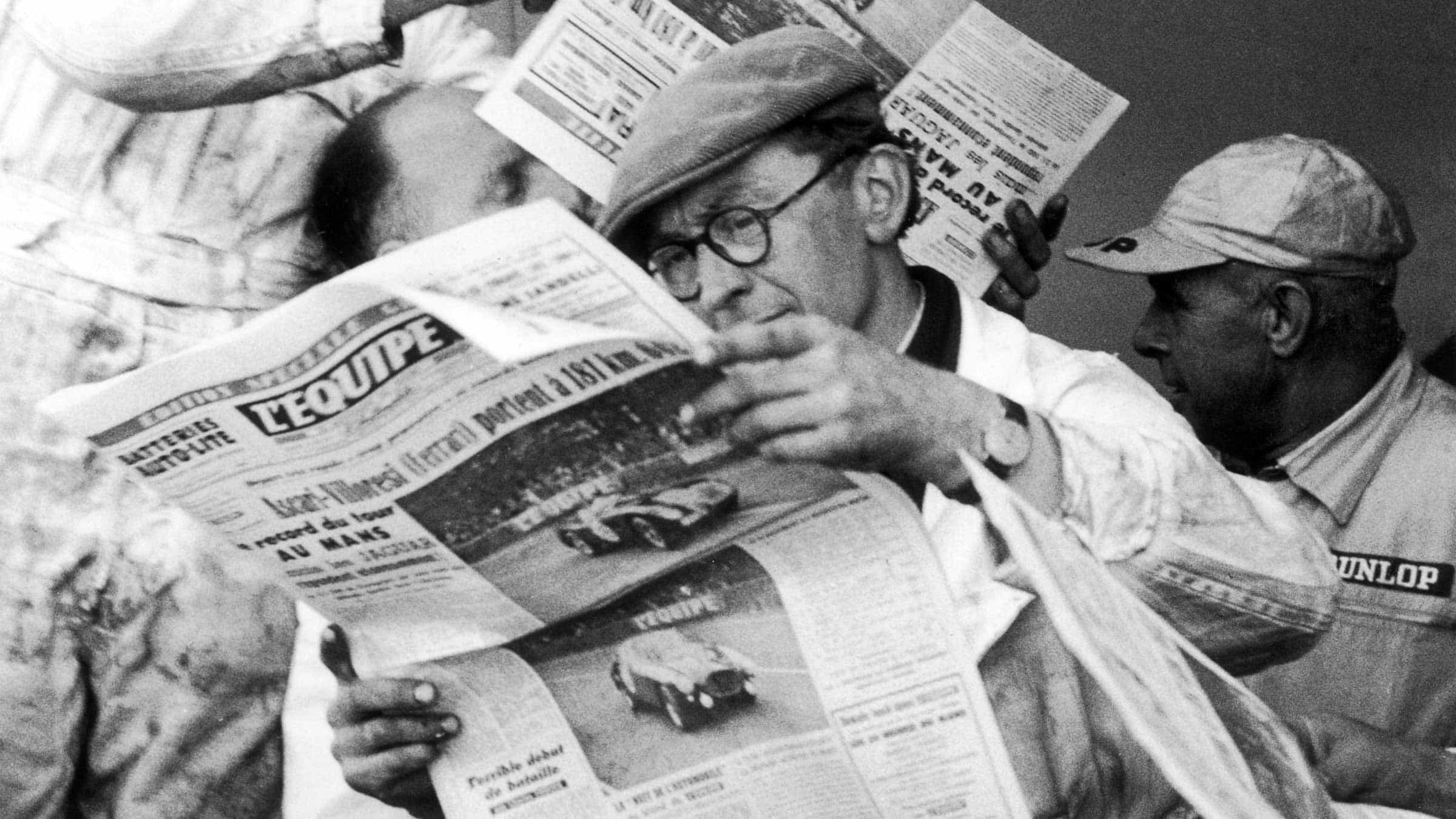
Mechanics at the 1953 race, reading newspaper reports
Getty Images
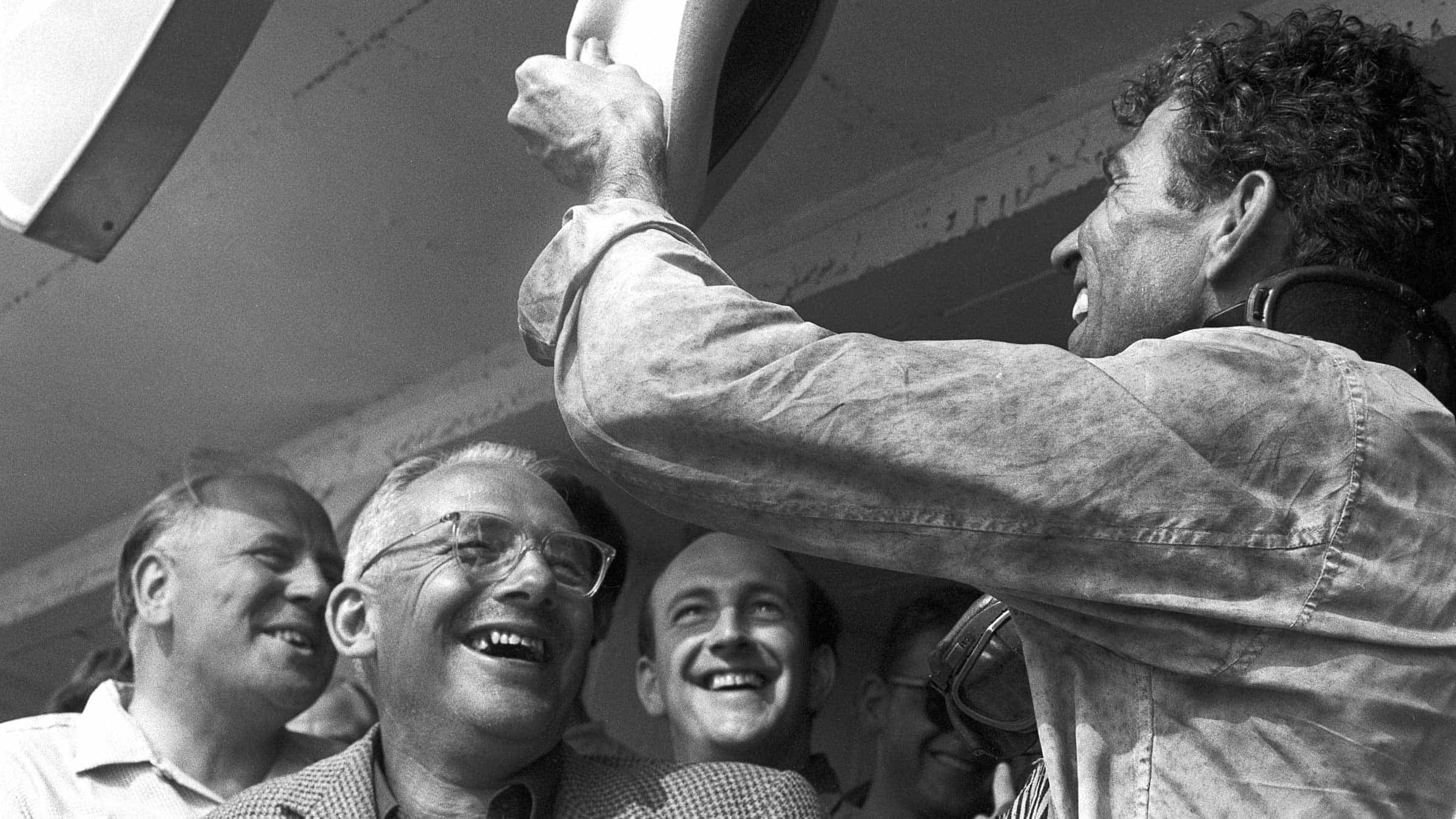
It had been a long wait, but Aston Martin finally broke its Le Mans duck in 1959. This is Reg Parnell, David Brown and Carroll Shelby in the pits near the end of that victorious drive in the DBR1
Getty Images
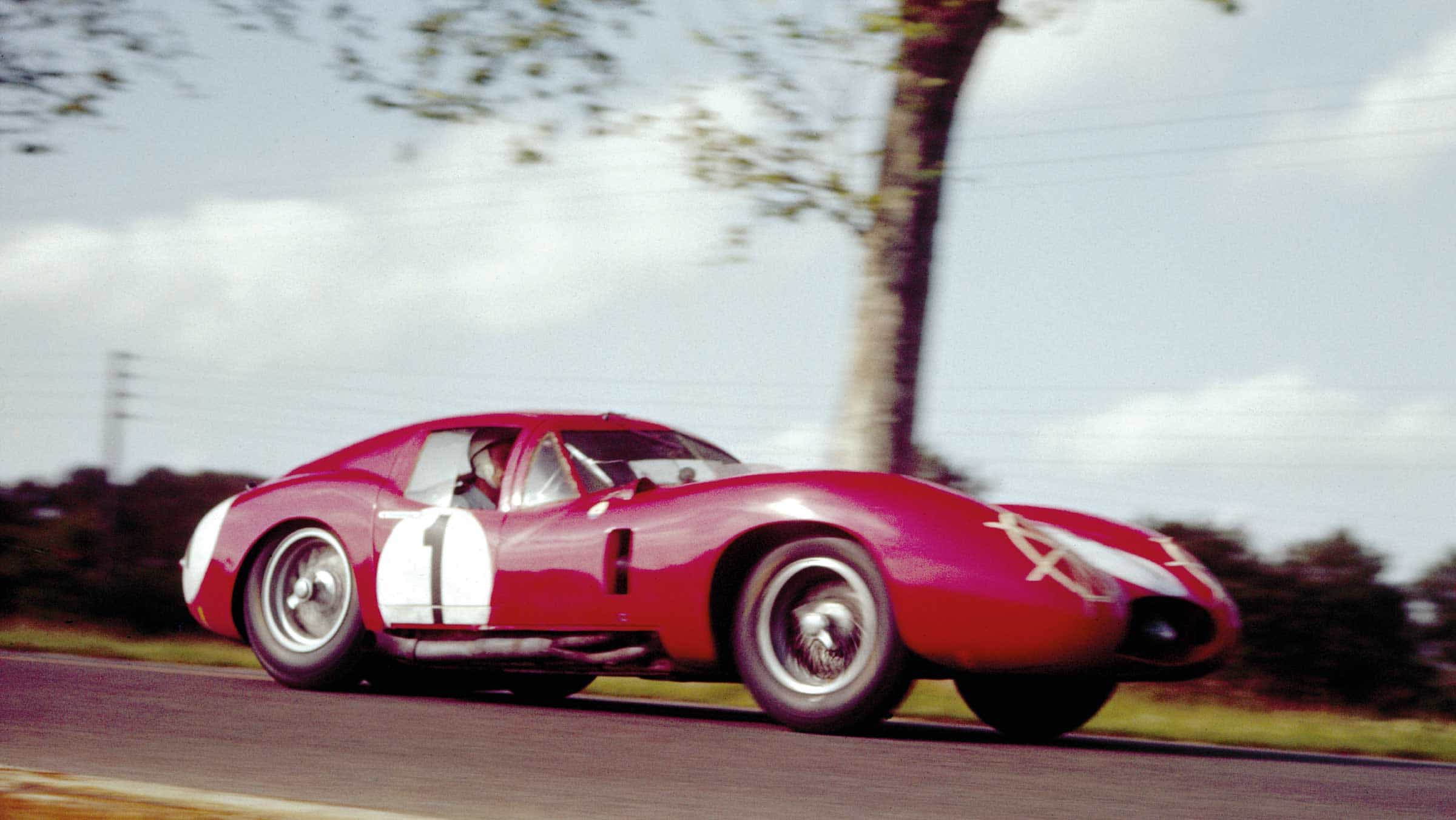
The beautiful Zagato-styled Maserati 450S driven by Stirling Moss and Harry Schell in 1957. While it looked great, it didn’t perform, retiring with transmission failure after just four hours
Getty Images

The start of the race in 1955. Leading is the Ferrari 735 LM driven by Umberto Maglioli/Phil Hill, with the Jaguar D-type of Don Beauman/Norman Dewis behind. The Ferrari’s clutch failed after seven hours, while the Jag retired after a crash, leaving the #6 sister car of Mike Hawthorn/Ivor Bueb to win
Getty Images
